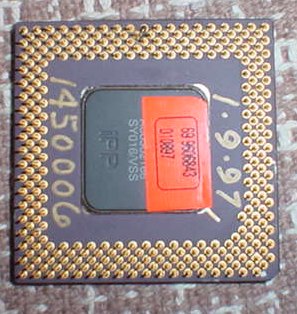
Packard Bell System Survival Testing (not deliberately!)

This page isn't all that exciting, but after what happened
I'm amazed the system is still alive and happy. As anyone involved with computer
repair knows, Packard Bell was a computer company that just never seemed to get
it right or do a very good job with their products. With stock equipment these
machines usually worked pretty well and several of them I have owned for 10
years+ keep right on going strong. But if you started expanding them or
replacing things, you could be in for a real treat and lots of hair
pulling.
It also seems that a lot of PB systems had a reputation for
being pretty tough and still running after people who didn't know what they were
doing tried to fix or upgrade them.
NEC later bought Packard Bell and did
make some effort to recover the brand. But ultimately it was dropped, at least
in the United States.
Short intro: Long time ago I came into a Packard
Bell something-or-other model Pentium-based computer. It was a Pentium 100 based
system. At the time it was purchased, I had enough computers to fulfill all my
daily needs, so the system sat in storage for a long time.
I decided to
sell the system just recently, but the person who bought it wanted a faster CPU
than 100MHz. So I grabbed a few CPUs, and sorted through them while working on
other aspects of the machine. I found a P166 to be the fastest rated CPU of the
bunch, so I popped the old CPU out and put the 166MHz one in. It went in without
much trouble, only one edge didn't seat entirely. I figured the chip was just
not quite aligned perfectly because I had seen CPUs do that before. So I pushed
it down, and it went into the socket. Didn't think any more of
it.
Powered up, system POST comes up and seconds later there is a
horrible burning odor from the CPU area and the power supply fan slows way
down.. Whoops! What could I have done? Looked around for blown voltage
regulators or other parts with the impression that I probably just killed the
sale and the system. Popped the CPU out and then I found it--a pin smashed into
another and causing a short circuit! When the system was powered, it "welded"
the pins together and even after separation, the processor no longer works. The
heat produced from this also burned a pretty impressive mark into the ZIF
socket.
After that I installed the next fastest chip from the bunch and
powered up, expecting to find the system dead. Let's just say I was pretty
amazed when the POST screen came up and it booted into Win98 like nothing ever
happened.
Go Back>
Copyright ©2003 by William R. Walsh. All Rights Reserved.